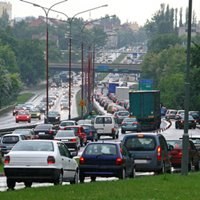(BRUSSELS) – The European Parliament’s environment committee adopted its proposals Thursday to lower pollutant emissions and set battery durability requirements for passenger cars, vans, buses and trucks.
The revamp of the EU rules for type-approval and market surveillance of motor vehicles updated the limits for exhaust emissions to levels proposed by the Commission for pollutant emissions (such as nitrogen oxides, particulate matter, carbon monoxide, and ammonia) for passenger cars and proposed an additional breakdown of emissions into three categories for light commercial vehicles based on their weight.
According to the Commission, by 2035 Euro 7 would reduce nitrogen emissions from cars and vans by 35% compared to Euro 6, and by 56% compared to Euro VI for buses and trucks. Particle emissions from cars and vans would be 13% lower, and 39% lower from buses and trucks, while brake particles would be 27% lower.
The adopted text proposes stricter limits for exhaust emissions by buses and heavy-duty vehicles, including levels set for real driving emissions. The emission standards currently in force (Euro 6/VI) would apply until 1 July 2030 for cars and vans, and 1 July 2031 for buses and trucks (compared to 2025 and 2027 respectively as proposed by the Commission)
MEPs want to align the EU’s calculation methodologies and limits for brake particle emission and tyre abrasion rate with international standards currently being developed by the United Nations Economic Commission for Europe. These rules would apply to all vehicles, including electric ones. The text also includes higher minimum performance requirements for battery durability for cars and vans than those proposed by the Commission.
Other proposed measures include:
- An up-to-date environmental vehicle passport (EVP) containing information such as fuel consumption, battery health, emissions limits, periodic technical inspections results;
- Stricter lifetime requirements for vehicles, engines and pollution control systems;
- Obligation to install on-board systems for monitoring several parameters such as excess exhaust emissions, real-world fuel and energy consumption, and traction battery health;
- Specific rules for small and ultra-small volume manufacturers.
The report is scheduled to be adopted during the November I plenary sitting and will constitute Parliament’s negotiating position with EU governments on the final shape of the legislation.
Further information, European Parliament



